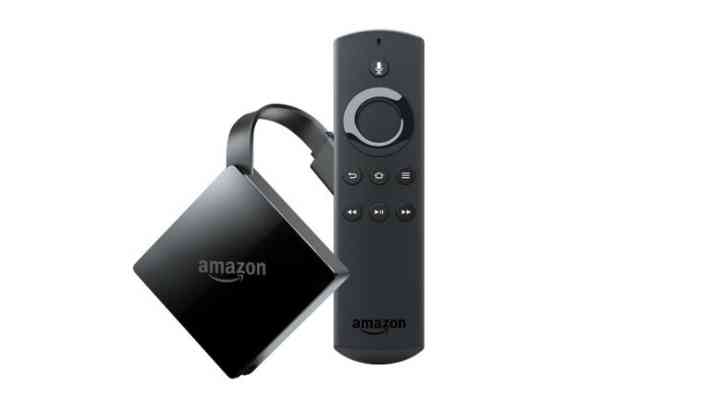eMusic, subscription download service falls out with indie labels
eMusic , the subscription based music download service has emailed users to inform them that they will soon lose access to music from some independent record labels.

The email, sent on November 16th told the subscribers that they only have two more days remaining to download music from the Domino , Merge and Beggars labels. This means that eMusic subscribers will be losing access to popular indie artists such as Belle & Sebastian, Cat Power and Arcade Fire.
This loss comes not long after eMusic announced a deal with Universal Music Group which would see eMusic’s catalog expand by 250,000 tracks, but, which forced eMusic to change their pricing model to allow variable pricing for tracks. Their failure to renegotiate a deal with these indie labels, traditionally their best supporters, must come as a blow to eMusic whose membership of mainly indie music fans has not grown significantly since 2007, despite eMusic’s push to sign major labels, or, perhaps, because of that push.
Read more about changes in the music business on The Next Web here and here .
Review: Amazon’s 4K Fire TV is feature packed, lightning fast, and wonderfully priced
Amazon is set to release its new 4K Fire TV streaming device just in time for the holidays. I’ve spent the last week putting one through the paces to determine if it was a worthy challenger among streaming media gadgets. I’m happy to report it’s a silky smooth operator that’s perfectly priced to take its place near the head of the pack.

The Fire TV isn’t a revolutionary leap ahead – if you’re anything like me you’ll just use it to watch Netflix and Hulu like you do with every other device. Instead of a reinvention, Amazon’s engineers opted for a fine-tuning. Fire TV is fast, really fast, and it’s easy enough to use that a child (or adult who doesn’t understand all these new-fangled gadgets and gizmos) could use it with ease.
Credit: Nicole Gray
This owes in part to some pretty great optimization, but I think the hardware speaks for itself:
Processor – AMlogic S905z/1.5 Ghz
Supported Resolution: 2160p, 1080p, and 720p, up to 60 FPS
HDR Support: HDR-10
Memory – 2GB
Storage – 8GB
Audio – Dolby Atmos
Network – WiFi and Ethernet (requires adapter for Ethernet)
The 1.5 Ghz processor almost seems like overkill, but I’m not gonna complain. With the addition of 2GB of memory and an Ethernet adapter the Fire TV is faster than Chromecast or Roku, in my experience. Disclaimer: I haven’t tried the Apple TV device, thus it’s been omitted from this article for comparison purposes.
Along with speed, the Amazon offering is also robust. HDR support makes a big difference over the last model, and having Alexa built into the included remote control brings it on par with Chromecast.
If you want to ditch the “hands-on” experience entirely, you can pair an Amazon Echo device with FireTV and, in doing so, give yourself the ability to use Alexa as a way to control your streaming television. This integration works seamlessly – and that ease-of-use is a common theme throughout the Fire TV experience.
I’ve typically used my Xbox One as the primary entertainment hub in my home, but I don’t have a console in every room that I have a television. I certainly don’t want to unplug and move my console, its external hard drive, and a controller every time I switch TVs. This leaves me either using the built-in smart tv menus – which are ridiculously slow – or moving my laptop back and forth.
The new Fire TV is a bit larger than the sticks, but still small enough (and light enough) to dangle from your TV’s HDMI port unnoticed. It’s incredibly easy to move from screen-to-screen, and has a great picture even on older 1080p TVs.
Credit: Nicole Gray
It absolutely shines on 4K TVs thanks to HDR support, which finally brings my streaming TV in-line with my Xbox One S. The difference is noticeable when streaming 4K programming, like The Defenders on Netflix — which looks gorgeous in all its glory.
I’m not a huge Amazon Prime Video fan, and it’s not because of the service itself, I just haven’t fallen in love with any of it’s shows just yet (sorry “Chance”). That being said, I was not even slightly bothered by the Prime-heavy user interface; it’s not as bad as you might think.
Sure, Amazon’s service takes up a lot of real-estate on the home screen, but that’s to be expected. What’s important here is that after a day’s use I found Netflix and Hulu were right upfront and noticeable, and there was never a time I struggled to find what I was looking for.
I found myself searching for new shows and movies more often with the Fire TV than I did with Roku, or when I used the same streaming services on other devices. It’s so fast that I never felt punished for searching – no spinning wheels or “oops, we’re sorry” happened during my use. Alexa was able to find shows across multiple apps and allowed me to easily pick the one I wanted to use.
I used the new 4K Fire TV under the disclaimer it may get final updates before its actual release, and never once had an issue with it. There wasn’t any slowdown or freezing, and my WiFi was more than enough to get the job done – if it wasn’t, the optional Ethernet adapter worked without a hitch in my testing as well. I didn’t experience any buffering whatsoever, something my Xbox and Chromecast both suffer from when using Netflix.
The device also comes with games, which I only briefly checked out, but found impressive for a streamer. Games like “Jackbox Party Pack 3” and “Crossy Road” are some pretty cool offerings for a streaming gadget, and the freebies I checked out ran as smoothly as the other apps on the device.
Amazon’s 4K Fire TV is simple enough for Grandma to use, and I didn’t find it lacking anywhere. I won’t be going back to my old Chromecast or Roku devices – the Alexa integration and HDR support are great, but the speed of Fire TV sets it apart for me.
The new 4K Fire TV is blazing fast, has a sharp picture thanks to HDR, and at $69.99 it’ll launch as one of the best values in streaming TV – and if you’re a Prime subscriber it’s a no-brainer.
You can get yours starting October 25th here on Amazon .
Smartwatches ‘for children’ can eavesdrop and keep tabs on your kids
The Norwegian Consumer Council has uncovered a litany of critical vulnerabilities and privacy shortcomings in several smartwatches specifically targeted at children.

Among other things, malicious agents can easily hijack control of the watches and turn them into covert spying devices, capable of listening in and keeping tabs on the children.
The Consumer Council made the disturbing discovery in collaboration with security firm Mnemonic, which assisted in conducting the security and privacy tests. The shocking findings suggested that, contrary to keeping children safe as advertised, the devices put them at risk.
The three flawed smartwatches all came from different manufacturers. The companies behind the glitchy devices are UK-based XPLORA , local brand Viksfjord , and Gator . All three devices also come with their own mobile apps.
According to the findings, attackers could seize control of the watches to watch, track and eavesdrop on children.
They could also establish contact with the kids abusing the same exploit. The report further notes the watches’ location settings could be spoofed to trick the children into thinking they are somewhere where they aren’t.
The watches also suffered from badly implemented safety features. Parents could, for instance, request to be notified when the child leaves a certain area – or conversely, enters a forbidden area – but Mnemonic and the council found that the features were dangerously unreliable when it came to sending out alerts.
Lastly, the apps associated with the watches lacked proper terms and conditions – in addition to missing the option to delete user data or accounts.
The council also examined the Tinitell watch, but was unable to exploit the device to the same extent as the previous three.
“It’s very serious when products that claim to make children safer instead put them at risk because of poor security and features that do not work properly,” commented the Council’s Director of Digital Policy Finn Myrstad.
“Importers and retailers must know what they stock and sell. These watches have no place on a shop’s shelf, let alone on a child’s wrist,” Myrstad added further.
The council has since forwarded their research to the Norwegian Data Protection Authority and the Consumer Ombudsman for breaches of the Norwegian Personal Data Act and the Marketing Control act. The complaints are based on the EU’s Data Protection Directive and the Directive on unfair terms in consumer contracts.
The press release further notes that the offending manufacturers continue to actively promote the watches even after they were warned of the violations. The worst part is that the devices are available in a number of other EU member states.
In the meantime, the Council advises consumers from refraining from buying the affected smartwatches until the manufacturers have amended the vulnerabilities. Their disclosure further guides people to ask for a refund, pointing to the security flaws discovered.

Leave a Comment